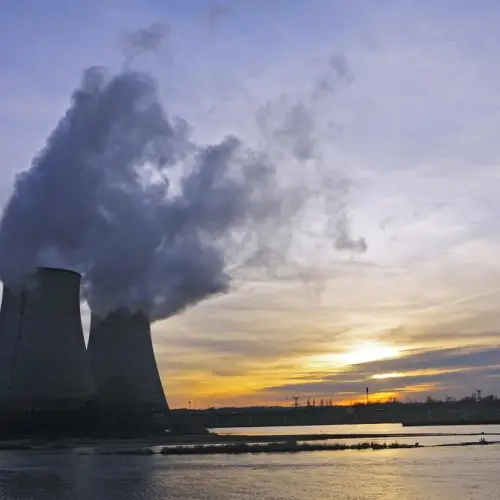
The future of nuclear energy is being shaped by technological advances and diverse energy policies that vary from country to country. As the world grapples with the effects of climate change and seeks sustainable energy sources, nuclear innovations and policy decisions will play a major role in determining the viability and acceptance of nuclear energy in the decades to come.
Below we will see what technological innovations the future holds for us and what vision the countries with the most relevance in nuclear energy have for the coming decades.
Technological innovations
Fourth generation reactors
Fourth-generation reactors are designed to be safer, more efficient, and more sustainable than current models.
These reactors include several innovative technologies:
They use a mixture of molten salts as a coolant and fuel, which allows them to operate at higher temperatures and lower pressures. These reactors have greater thermal efficiency and can significantly reduce the production of radioactive waste.
Instead of thermal neutrons, they use fast neutrons to keep the chain reaction going, which allows fuel to be used more efficiently and reduces the amount of waste in the long term. These reactors can also recycle used nuclear fuel, making better use of available resources.
They work with helium gas as a coolant, which allows them to operate at very high temperatures and improve the efficiency of converting heat into electricity.
One of the characteristics of these reactors is that they can provide high-quality heat for industrial processes in addition to electricity.
Nuclear fusion
Nuclear fusion is a promising technology that could revolutionize energy generation.
Unlike fission, which splits apart heavy atoms, fusion combines light nuclei, such as deuterium and tritium, to form helium and release large amounts of energy. The advantages of fusion include:
- Fuel abundance: Fusion fuels such as deuterium can be extracted from seawater, and tritium can be produced from lithium, ensuring a virtually unlimited source of fuel.
- Low radioactive waste: Fusion produces much less radioactive waste than fission, and the materials generated have a shorter half-life.
- Safety: The fusion reaction cannot sustain an uncontrolled chain reaction, which significantly reduces the risk of catastrophic accidents.
However, fusion still faces technical challenges that need to be overcome, such as maintaining the extreme conditions needed to sustain the reaction, and is not expected to become commercially viable until the second half of the century.
Scientific projects
 There are currently several outstanding scientific projects that seek to make this technology a reality. Let's look at the most significant ones:
There are currently several outstanding scientific projects that seek to make this technology a reality. Let's look at the most significant ones:
- The ITER ( International Thermonuclear Experimental Reactor ), located in France, is the largest nuclear fusion project in the world. Its objective is to demonstrate the viability of fusion as an energy source, recreating the conditions of the sun to generate clean energy.
- The UK's JET (Joint European Torus ) has pioneered fusion research and has achieved record levels of fusion energy output, providing valuable data for ITER.
- In the United States, the National Ignition Facility (NIF) uses high-energy lasers to attempt to achieve fusion ignition, a milestone where the fusion reaction produces more energy than it consumes.
- Another promising project is SPARC, a collaboration between MIT and Commonwealth Fusion Systems, which aims to be the first fusion device to produce more energy than it consumes, using high-temperature superconductor technology to create stronger, more efficient magnetic fields.
- In Germany, the Wendelstein 7-X, a star reactor, is exploring advanced magnetic configurations to contain fusion plasma more stably.
- China is also making significant progress with its EAST (Experimental Advanced Superconducting Tokamak), which has managed to maintain fusion plasma at record temperatures.
Small Modular Reactors (SMRs)
 Small Modular Reactors (SMRs) are nuclear reactors of smaller size and capacity compared to traditional nuclear plants. Designed to be manufactured in modules and assembled on-site, they offer advantages such as reduced costs, shorter construction times, and greater flexibility in their deployment.
Small Modular Reactors (SMRs) are nuclear reactors of smaller size and capacity compared to traditional nuclear plants. Designed to be manufactured in modules and assembled on-site, they offer advantages such as reduced costs, shorter construction times, and greater flexibility in their deployment.
SMRs incorporate advanced passive safety features, which do not depend on human intervention or active systems, which improves their operational safety.
These modular reactors can be used in a variety of applications, including generating electricity in remote areas, supplying power to industrial facilities, and integrating with smaller power grids.
Some of the main advantages offered by these modular systems are the following:
- Reduced cost and construction time: Due to their smaller size and modular design, SMRs can be manufactured in factories and assembled on-site, reducing costs and construction time compared to traditional nuclear plants.
- Enhanced Safety: SMR designs incorporate advanced safety features, such as passive cooling systems, which do not rely on human intervention or active mechanical systems to maintain safety.
- Versatility: SMRs can be used in a variety of applications, including generating electricity in remote areas, providing power for industrial facilities, and integrating with smaller power grids.
If you are curious to learn more about SMRs, you can visit this IAEA article.
Energy policies in different countries
Now let's look at the future prospects of the main nuclear energy-producing countries.
USA
In the United States, nuclear power remains a significant part of the energy mix.
The government has shown interest in supporting the development of advanced nuclear technologies, such as SMRs and fourth-generation reactors. Policies include funding for research and development, as well as streamlining regulatory processes to speed up the implementation of new nuclear technologies.
European Union
 The European Union's energy policy varies between member states.
The European Union's energy policy varies between member states.
Countries such as France, which gets around 70% of its electricity from nuclear power, continue to invest in modernizing their nuclear infrastructure. In contrast, countries such as Germany and Spain have decided to phase out nuclear power and focus on renewable sources.
At Community level, the EU supports research into advanced technologies and the safe management of nuclear waste. Recently, the European Parliament included nuclear energy in the classification of green energies.
China
China is rapidly expanding its nuclear capacity as part of its strategy to reduce dependence on coal and cut carbon emissions.
The country is investing in third-generation reactors, such as pressurized water reactors (PWR), and is leading the development of fourth-generation reactors, including fast reactors and molten salt reactors.
Japan
Following the Fukushima disaster in 2011, Japan revised its nuclear policy, temporarily shutting down all its nuclear plants and tightening safety standards.
In recent years, however, Japan has restarted some of its safest nuclear plants and is exploring advanced technologies to improve safety and efficiency.
Russia
Russia remains a major player in the nuclear sector, not only operating numerous nuclear plants but also exporting nuclear technology to other countries. In addition, the Russian Federation is developing fast reactors and SMRs and is actively involved in nuclear fusion research.